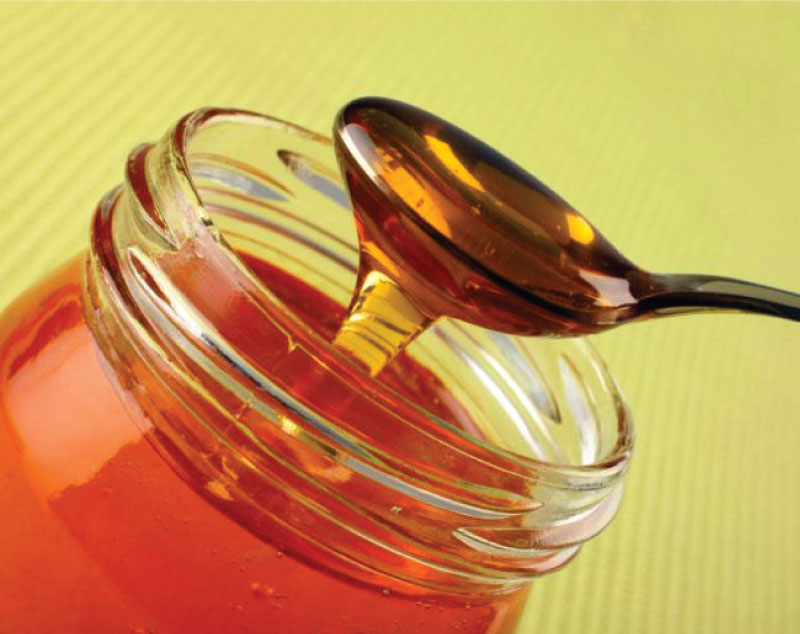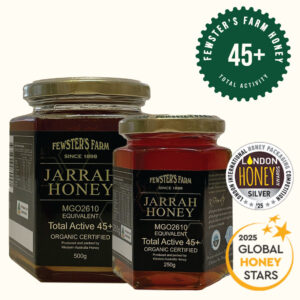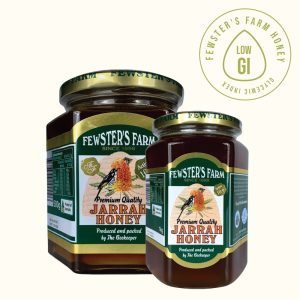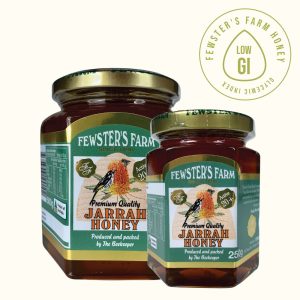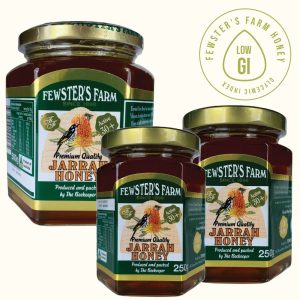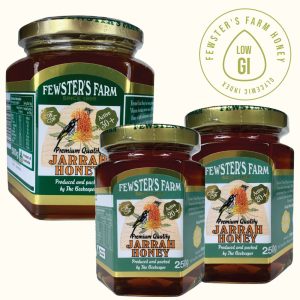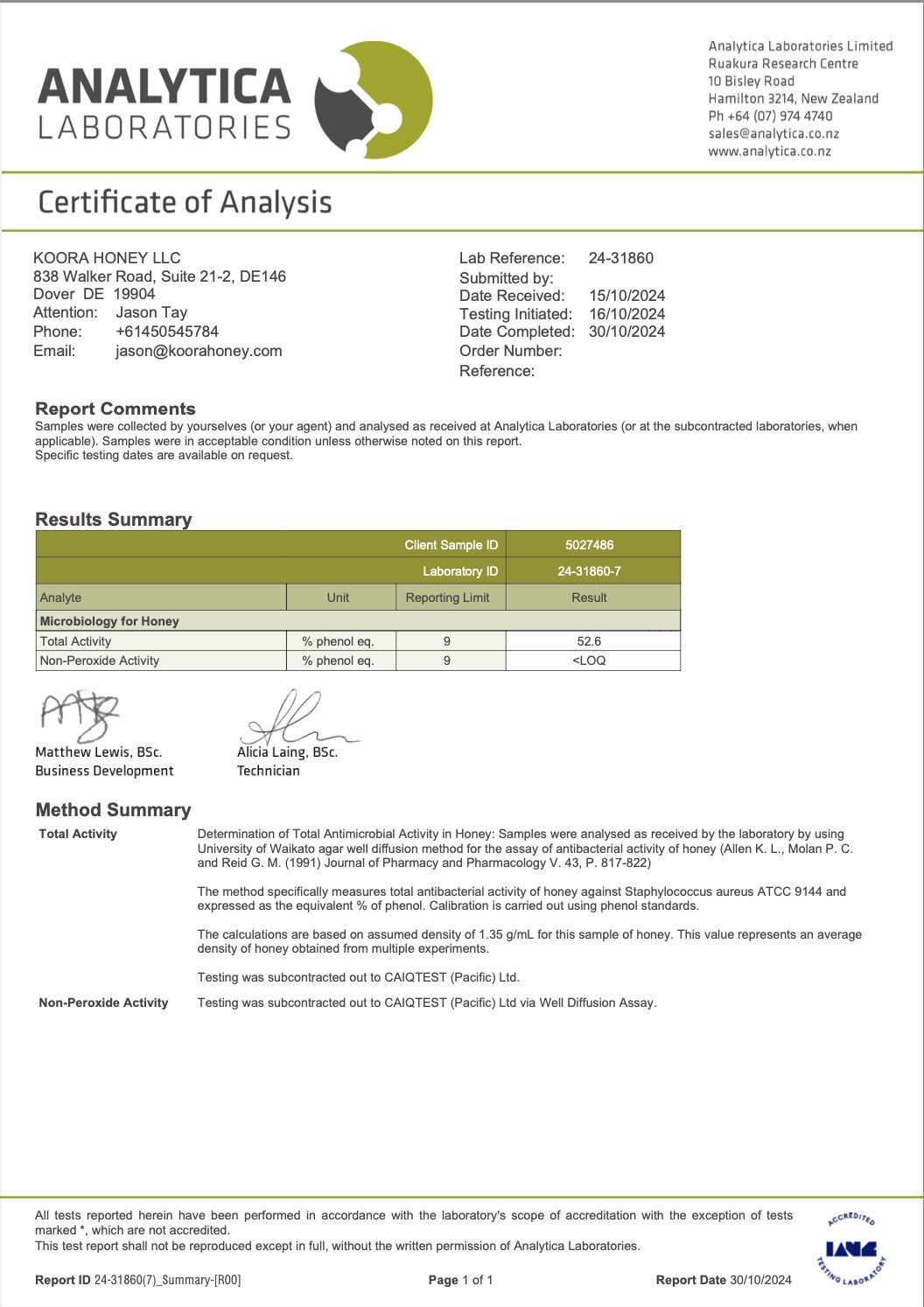Delicious & Nutritious
Jarrah Honey
Backed by nearly a century of experience – Fewster’s Farm has been producing premium quality Jarrah Honey from the pristine forests of Western Australian for four generations.
Delicious and nutritious, there’s really nothing else quite like it. Fewster’s Farm Jarrah honey is sourced from Eucalyptus marginata trees that grow only in the natural forests in the south-western part of Western Australia. The trees prefer the ancient iron-rich lateritic soils in this region, which absorb rain water during winter, but become very dry during summer. The size of the forests make them free from contamination or pollution from agricultural or industrial activities.
Why Jarrah is the best to buy
These trees are very slow-growing, taking up to 120 years to reach maturity, and live for up 1,000 years. The trees grow up to 40 metres tall with a large leaf canopy, and trunks up to 3 metres in diameter. They typically produce flowers only once every two years, from late spring to early summer. However, the flowering pattern is variable as it depends on sufficient rainfall during winter and warmth during spring.
Raw Jarrah honey is produced by bees from the nectar collected from these flowers, and is truly special. It often is considered one of the world’s most premier “healing honeys” that you can buy, as it has extraordinary natural anti-microbial and anti-fungal activity, high fruc- tose (and low glucose) levels, high antioxidant content, plus other beneficial vitamins, minerals and natural chemicals. This anti-microbial activity is measured by the term Total Activity (TA) and depending on the purity, raw Jarrah honey can have a TA of more than 38+ which is remarkably high.
Raw Jarrah Honey is special because, like many valuable things, it is in short supply. Western Australian Jarrah trees only flower once every two years meaning that Jarrah Honey harvesting only takes place bi annually.
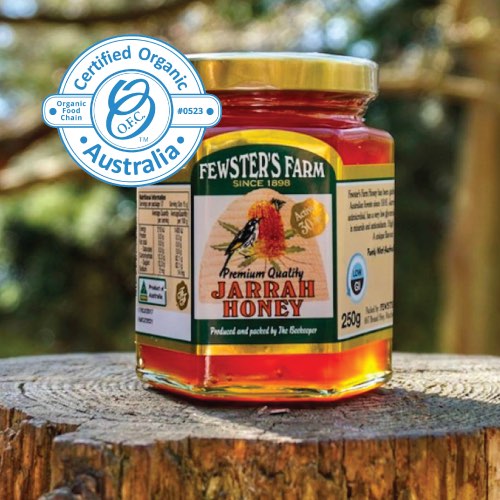
Honey and your Health
The many health benefits of Honey
Honey was used as a natural sweetener long before sugar became available. Honey is an extremely useful ingredient to have in the kitchen. Many refer to it as ‘liquid gold’ for its many health and beauty benefits.
Read below to find out more about this extremely useful ingredient.
Great for the Immune system: Honey can be a great boost to the immune system due to its antioxidant and anti-bacterial properties, which can improve the functioning of the digestive system and help you stay healthy and fight disease.
Sore throat cure: This is probably a common remedy you use at home. Honey is a great way to help treat sore throats or at least reduce the painful symptoms. Not only does it soothe the throat, it also kills the bacteria that causes the infection. The most common way to consume it is drinking a warm cup of water mixed with honey and lemon.
Treatment for cuts and burns: Honey has been widely recognised as a natural remedy for cuts and burns due to its antiseptic and anti-bacterial properties. These properties stop the growth of infection causing bacteria and help to keep the wounds clean and infection free. Some of the ailments honey has been used to treat are athlete’s foot, arthritis and yeast infection.
For sleeplessness and insomnia: This might seem to be a strange use for this ingredient however it can help to calm the soul and induce sleep. Sip a glass of hot milk mixed with a teaspoon or two of honey or add a few teaspoons to a cup of chamomile tea.
Skin treatments: Honey’s anti-bacterial properties make it a great ingredient to use in DIY skin treatments. Use raw honey as a mask and wash off after 30 minutes to reveal bright and soft skin. It is particularly great for those with sensitive or acne-prone skin. Use it in your bath to combat dry skin or mix it with sugar or baking soda for a great exfoliator that can be used on the face and body.
Try our honey and taste the difference…
Our Jarrah Honey Products
Fewster’s Farm specialises in producing high quality Jarrah honey harvested directly from the pristine ancient & ancient Jarrah forests of Western Australia.
All Fewster’s Farm Jarrah honey is tested for its TA level and batched accordingly.
Today, Fewster’s Farm offers 3 kinds of Jarrah honey products:
Jarrah Honey
TA 10+
Fewster’s Farm Jarrah Honey 10+
A Jarrah-dominant blend typically produced at the end of the Jarrah flowering season when other forest trees begin to flower. Fewster’s Farm Jarrah honey TA 10+ is perfect for general use where you want the benefits of a high concentration of Jarrah honey to deliver potent health benefits with a delicious taste.
Jarrah Honey
TA 20+
Fewster’s Farm Jarrah Honey 20+
Best described as “typical” Jarrah honey, TA 20+ is produced during normal flowering seasons of the Jarrah forest. It has significant antimicrobial Activity, is as rich in vitamins and minerals, and antioxidants as TA30+, and has the great flavour that Jarrah honey is famous for. An alternative to the TA30+ if you love the flavour of Jarrah so much you just have to eat more. It is also good to treat mild skin injuries or infections*.
Jarrah Honey
TA 30+
Fewster’s Farm Jarrah Honey 30+
One of the rarest and most unique honeys in the world, very high activity TA 30+ is sourced from old-growth Jarrah forests only when optimal climatic conditions occur during the bi-annual flowering of the Jarrah trees. The honey has exceptional antimicrobial and antifungal Activity, is rich in antioxidants (2 to 3 times more than Manuka), abundant vitamins and minerals, low GI (suitable for diabetics in moderation) and a host of other beneficial health properties. Eat as is, or drizzle over cereal, fruit or natural yogurt for best results. TA30+ Jarrah honey can also be used as a powerful dressing to aid healing of skin injuries* (burns, abrasions or ulcers). With magnificent taste and texture, this honey promotes vitality, good health and healing
Please consult your medical professional before using honey for medicinal purposes.
-
Jarrah Honey TA55+
Price range: $60.00 through $100.00 -
Jarrah Honey TA45+
Price range: $38.50 through $72.00 -
Jarrah Honey TA 10+
Price range: $22.00 through $35.20 -
Jarrah Honey TA20+
Price range: $27.00 through $51.00 -
Jarrah Honey TA30+
Price range: $37.50 through $66.00 -
Jarrah Range Gift Box
$90.00 -
Jarrah Honey TA30+ Gift Box
$135.00 -
Jarrah Honey TA20+ & TA30+ Gift Box
$115.00
Fewster’s Farm Jarrah Honey is not currently available through our website, please email us with your order requirements.
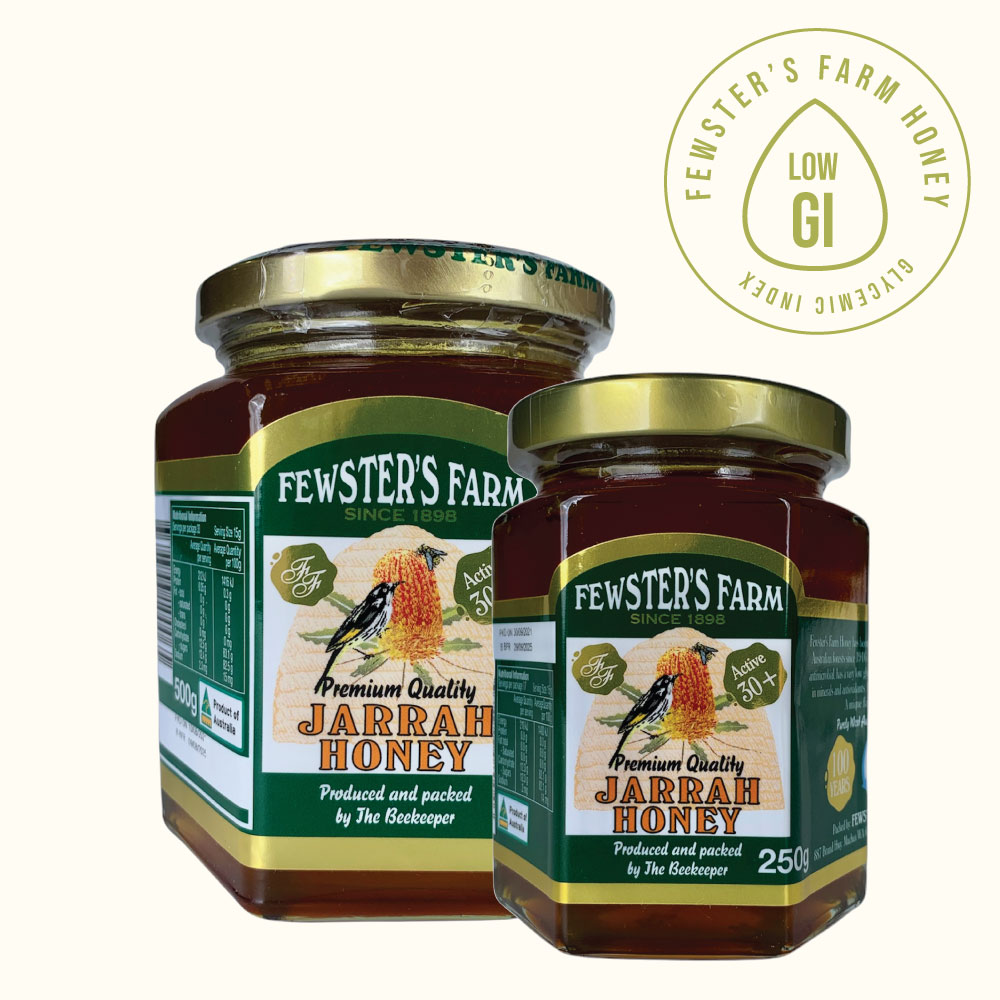
JARRAH HONEY TA 30+
.
Fewster’s Farm Jarrah Honey TA30+ is currently not available through our website. Please use the button below to email your order request to us. Alternatively, please call us on
+61 447 096 175

JARRAH HONEY TA 45+
.
Fewster’s Farm Jarrah Honey TA45+ is currently not available through our website. Please use the button below to email your order request to us. Alternatively, please call us on
+61 447 096 175
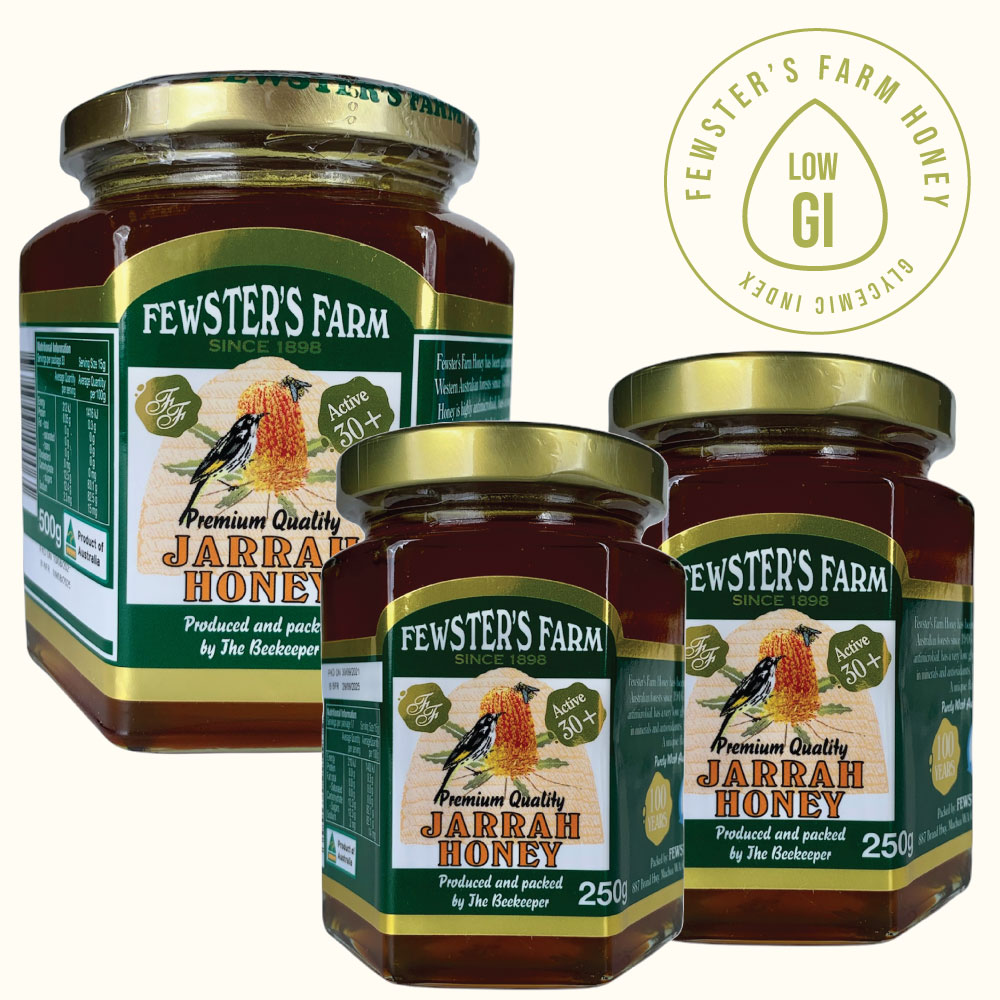
JARRAH HONEY TA 30+
Gift Box
Fewster’s Farm Jarrah Honey TA30+ Gift Box is not available through our website. Please use the button below to email your order request to us. Alternatively, please call us on
+61 447 096 175
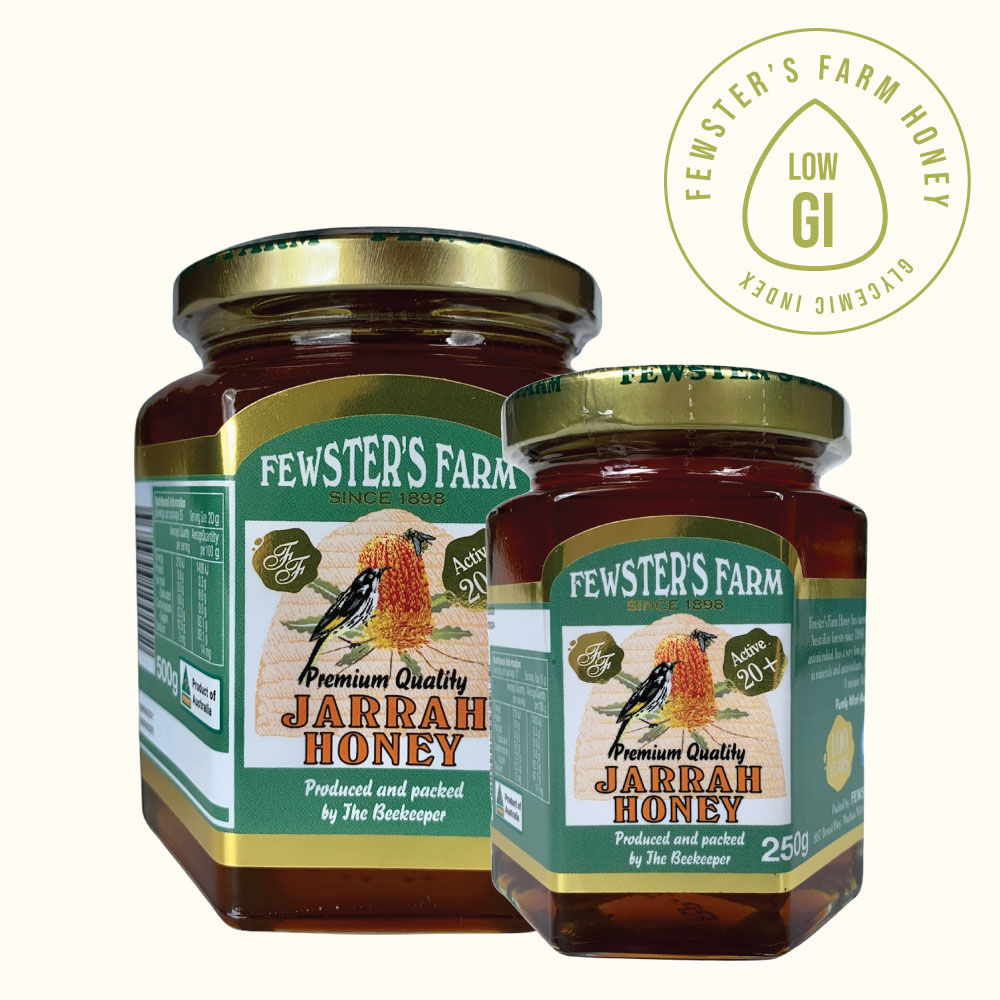
JARRAH HONEY TA 20+
.
Fewster’s Farm Jarrah Honey TA20+ is currently not available through our website. Please use the button below to email your order request to us. Alternatively, please call us on
+61 447 096 175
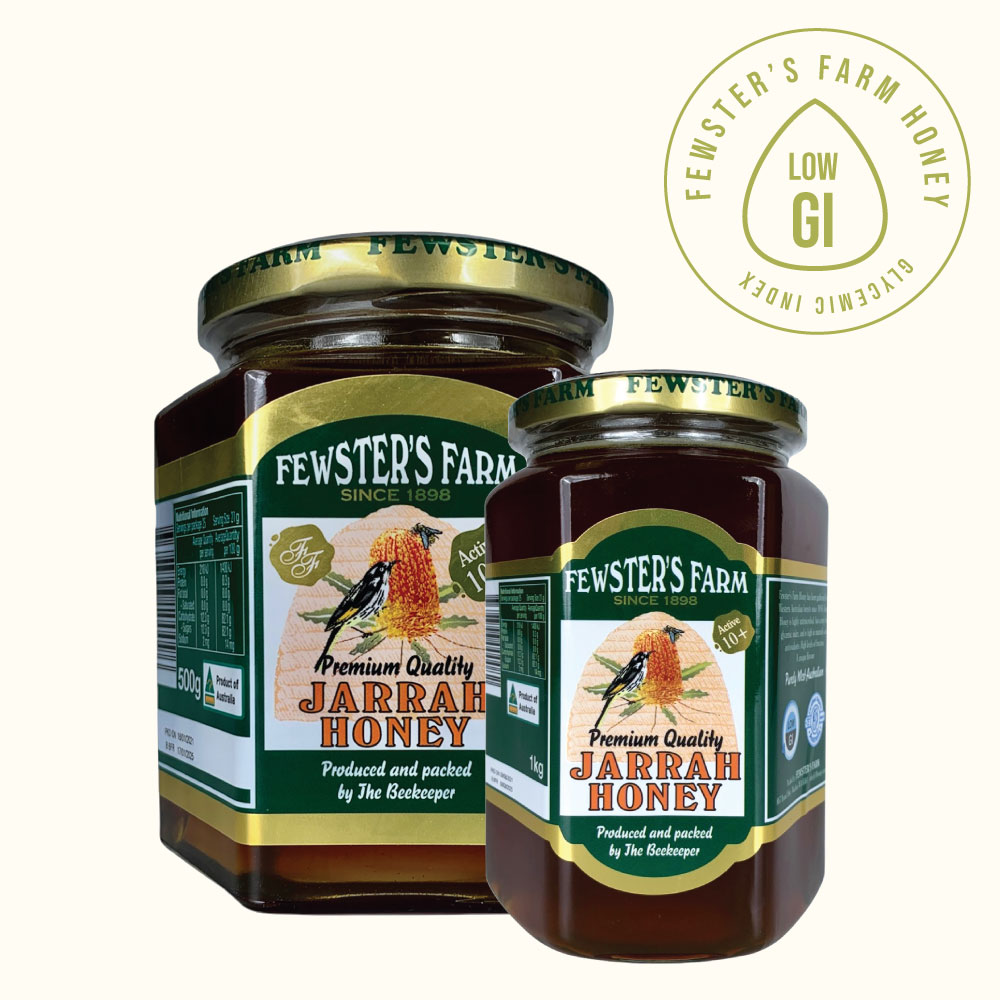
JARRAH HONEY TA 10+
.
Fewster’s Farm Jarrah Honey TA10+ is currently not available through our website. Please use the button below to email your order request to us. Alternatively, please call us on
+61 447 096 175
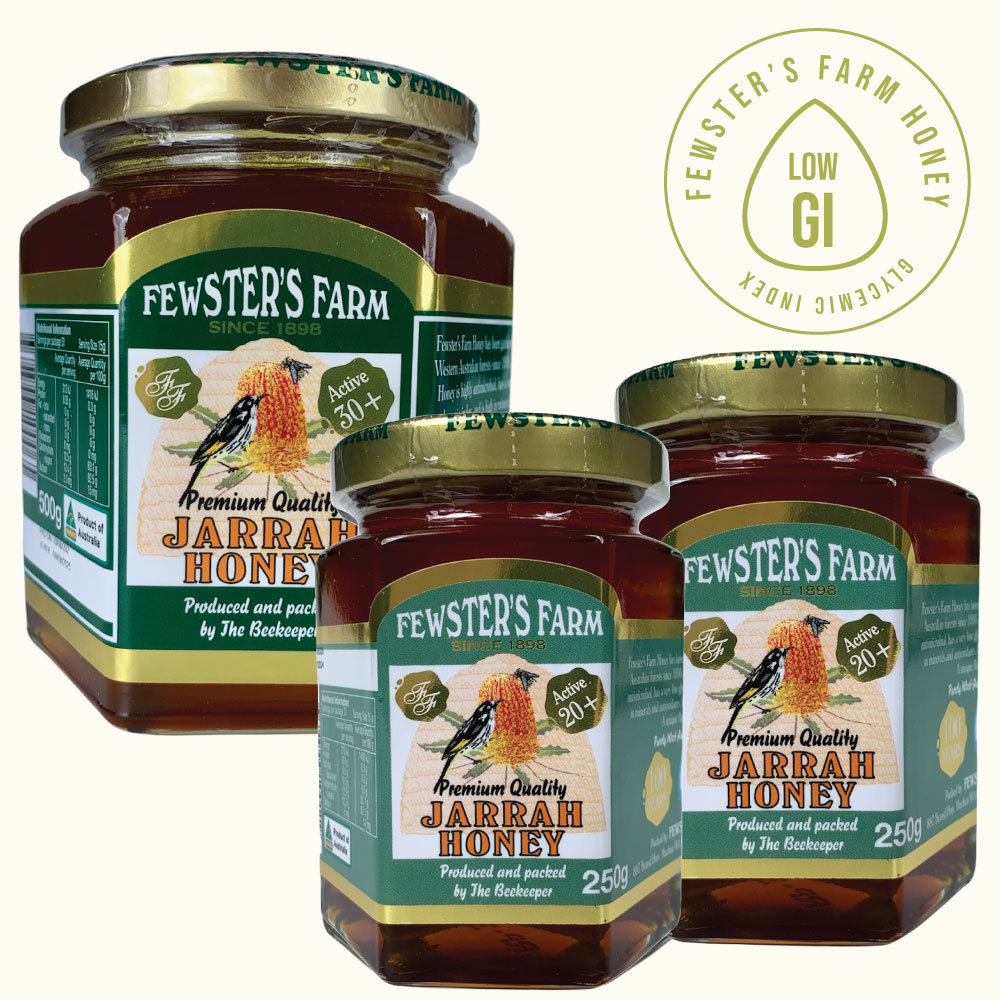
JARRAH HONEY TA 20+ & 30+
Gift Box
Fewster’s Farm Jarrah Honey Gift Box is not available on our website. Please use the button below to email your order request to us. Alternatively, please call us on
+61 447 096 175
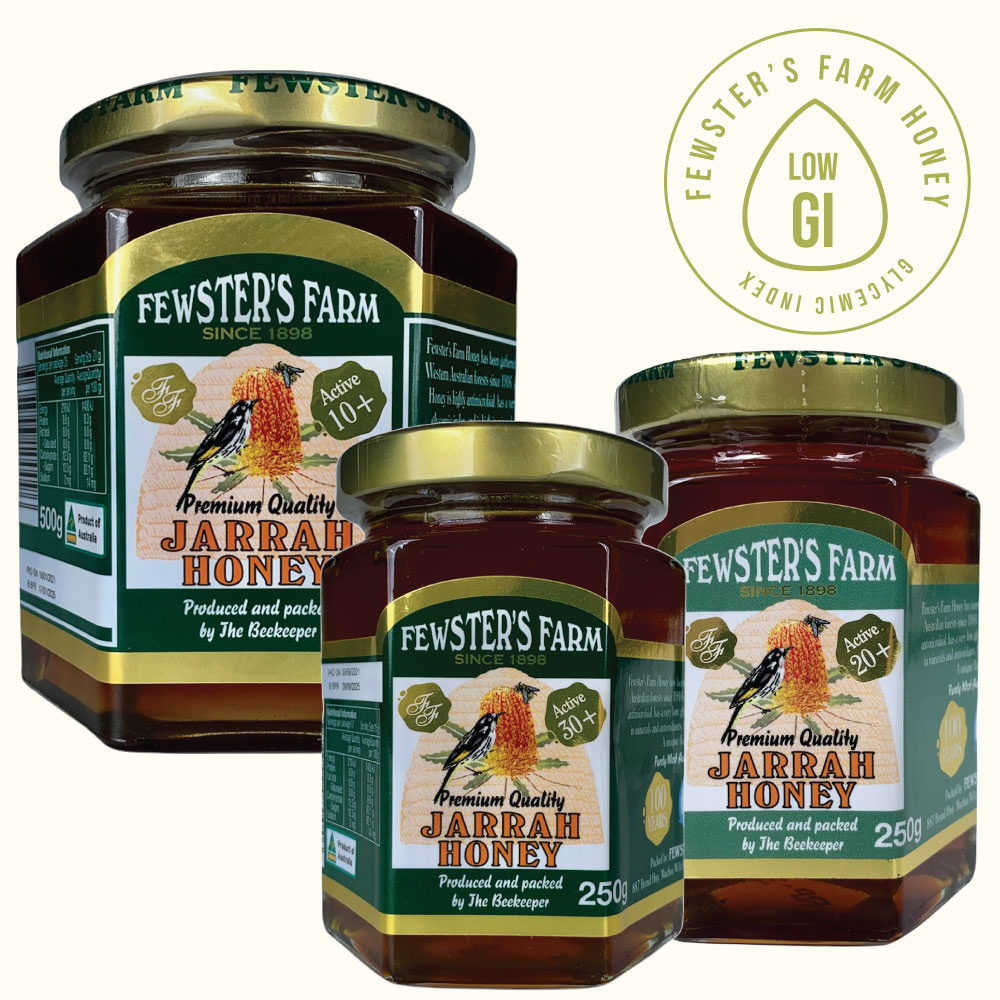
JARRAH RANGE GIFT BOX
.
Fewster’s Farm Jarrah Range Gift Box is currently not available through our website. Please use the button below to email your order request to us. Alternatively, please call us on
+61 447 096 175
Compare our honey…
What is Total Activity (TA)?
Jarrah honey’s anti-microbial quality is measured by the term “Total Activity (TA)”. The TA is like a bacteria killing scale; the higher the TA the greater the antimicrobial strength. The anti-bacterial activity of honey is derived via natural enzymes and chemicals in the honey. A description of the method used to determine the Activity of honey is included in this paper by Rob Manning. Any honey with a TA of greater than 10+ may have beneficial antimicrobial properties, and these properties are more effective as the TA level increases. Note that the UMF value on Manuka honey is essentially the same as a TA value, but the antimicrobial activity is generated by different chemical processes.
Total Activity is the combination of Peroxide Activity (PA) and Non-Peroxide Activity (NPA). In Jarrah honey, nearly all of the Activity is PA, and results from a reaction between an enzyme placed in the honey by the bees called Glucose Oxidase and glucose. This reaction, which starts when the honey is diluted, results in the gradual production of a low concentration of hydrogen peroxide. Hydrogen Peroxide is a powerful antibacterial and antifungal agent when operating in conjunction with honey’s other antiseptic properties, but is gentle on human tissue and the digestive system.
NPA results from any other chemicals in the honey that have an antibacterial effect. In Manuka honey, in which nearly all TA is NPA, the active chemical is Methylglyoxal (abbreviated to MGO). The MGO forms over time in the honey from the interaction of a chemical called dihydroxyacetone (DHA), which originates from the nectar of the Manuka flower, and other naturally-occurring proteins and amino acids in the honey. MGO is cytotoxic (toxic to cells).
Manuka producers have adopted two methods to describe the activity of Manuka honey that have vastly different values for the same honey. The UMF (Unique Manuka Factor) is a trademarked term to describe the NPA, and typically ranges from 5+ to 20+. More recently, an MGO value, which is the assayed methylgloxal content in mg/kg, is being used by some producers. MGO values range from about 100 to 1,000. The table below shows approximate equivalent values.
UMF Comparable to TA*
-
- 20+
- 15+
- 10+
- 5+
Minimum MGO
-
- 829
- 550
- 263
- 100
* Please note that UMF in Manuka measures non peroxide activity- it has very little peroxide activity. TA measures measures total activity
All Fewster’s Farm Jarrah honey is tested for TA in the Eurofins laboratory located in Waikato University, New Zealand.
* Please consult your health care professional before using honey for medicinal purposes.



